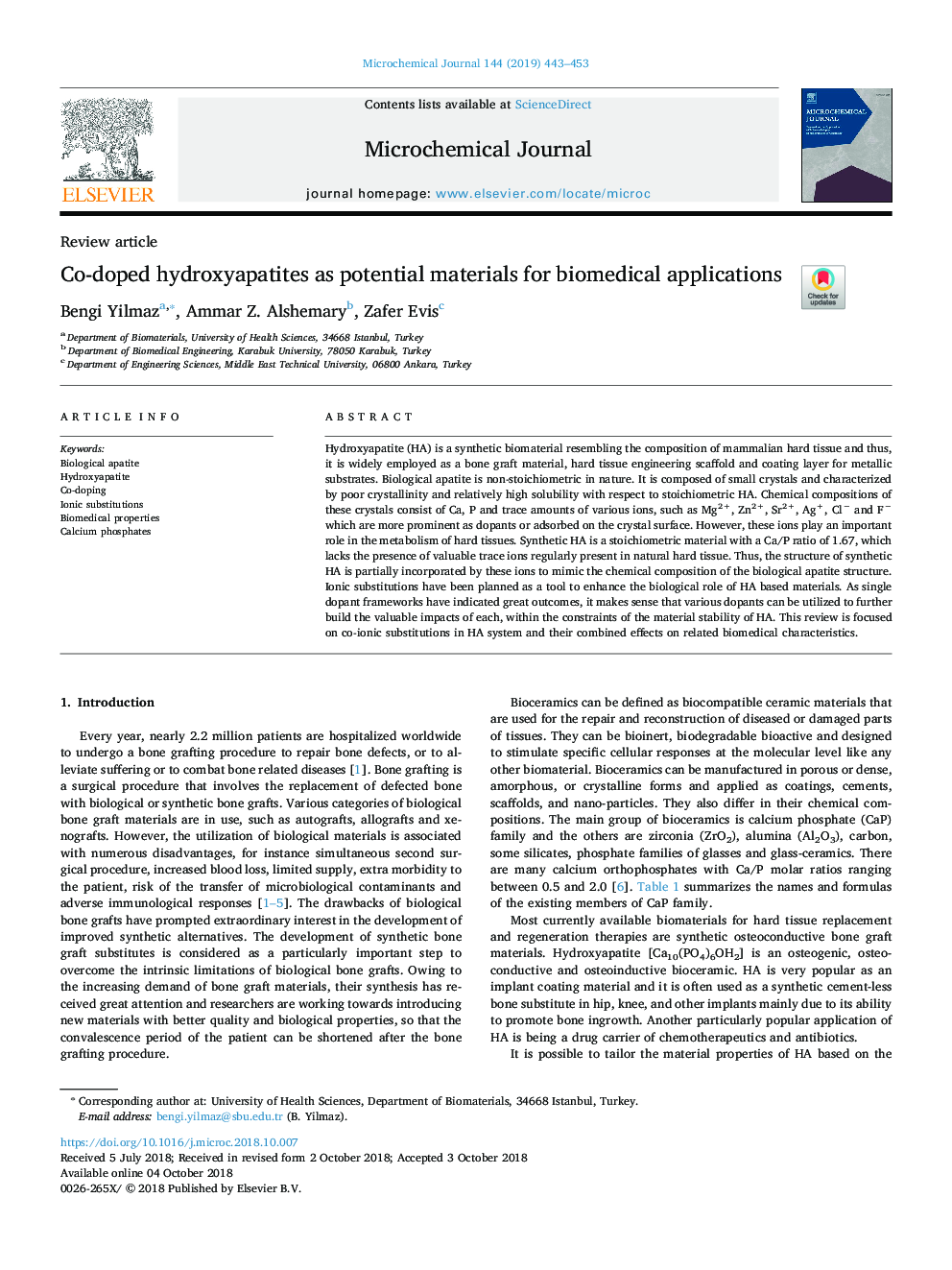| Article ID | Journal | Published Year | Pages | File Type |
|---|---|---|---|---|
| 11031242 | Microchemical Journal | 2019 | 11 Pages |
Abstract
Hydroxyapatite (HA) is a synthetic biomaterial resembling the composition of mammalian hard tissue and thus, it is widely employed as a bone graft material, hard tissue engineering scaffold and coating layer for metallic substrates. Biological apatite is non-stoichiometric in nature. It is composed of small crystals and characterized by poor crystallinity and relatively high solubility with respect to stoichiometric HA. Chemical compositions of these crystals consist of Ca, P and trace amounts of various ions, such as Mg2+, Zn2+, Sr2+, Ag+, Clâ and Fâ which are more prominent as dopants or adsorbed on the crystal surface. However, these ions play an important role in the metabolism of hard tissues. Synthetic HA is a stoichiometric material with a Ca/P ratio of 1.67, which lacks the presence of valuable trace ions regularly present in natural hard tissue. Thus, the structure of synthetic HA is partially incorporated by these ions to mimic the chemical composition of the biological apatite structure. Ionic substitutions have been planned as a tool to enhance the biological role of HA based materials. As single dopant frameworks have indicated great outcomes, it makes sense that various dopants can be utilized to further build the valuable impacts of each, within the constraints of the material stability of HA. This review is focused on co-ionic substitutions in HA system and their combined effects on related biomedical characteristics.
Related Topics
Physical Sciences and Engineering
Chemistry
Analytical Chemistry
Authors
Bengi Yilmaz, Ammar Z. Alshemary, Zafer Evis,
